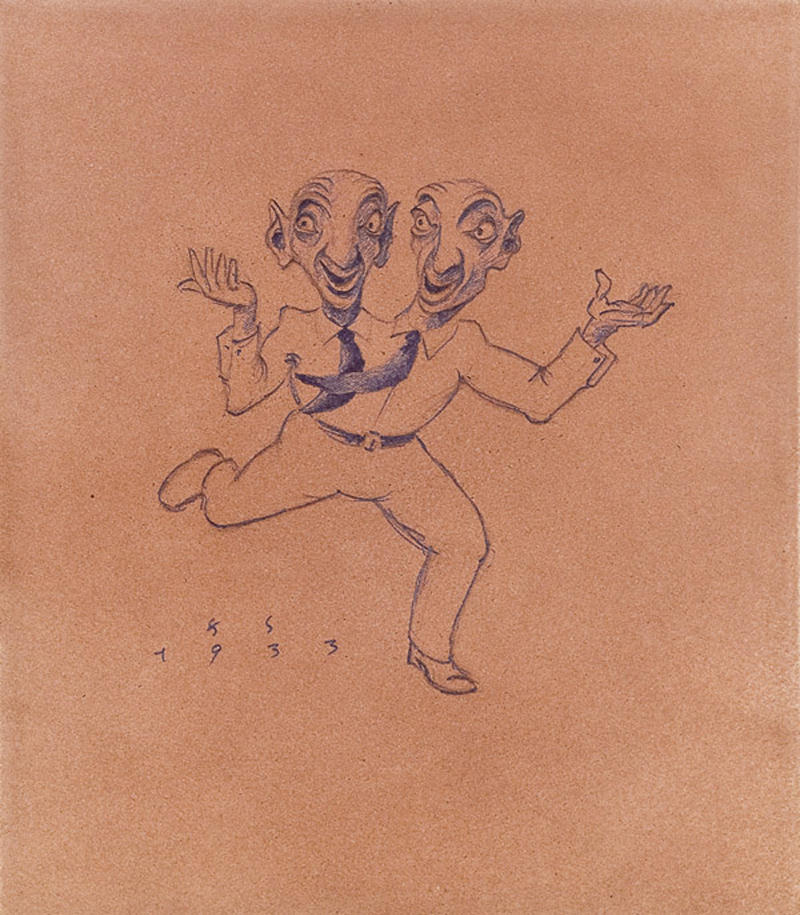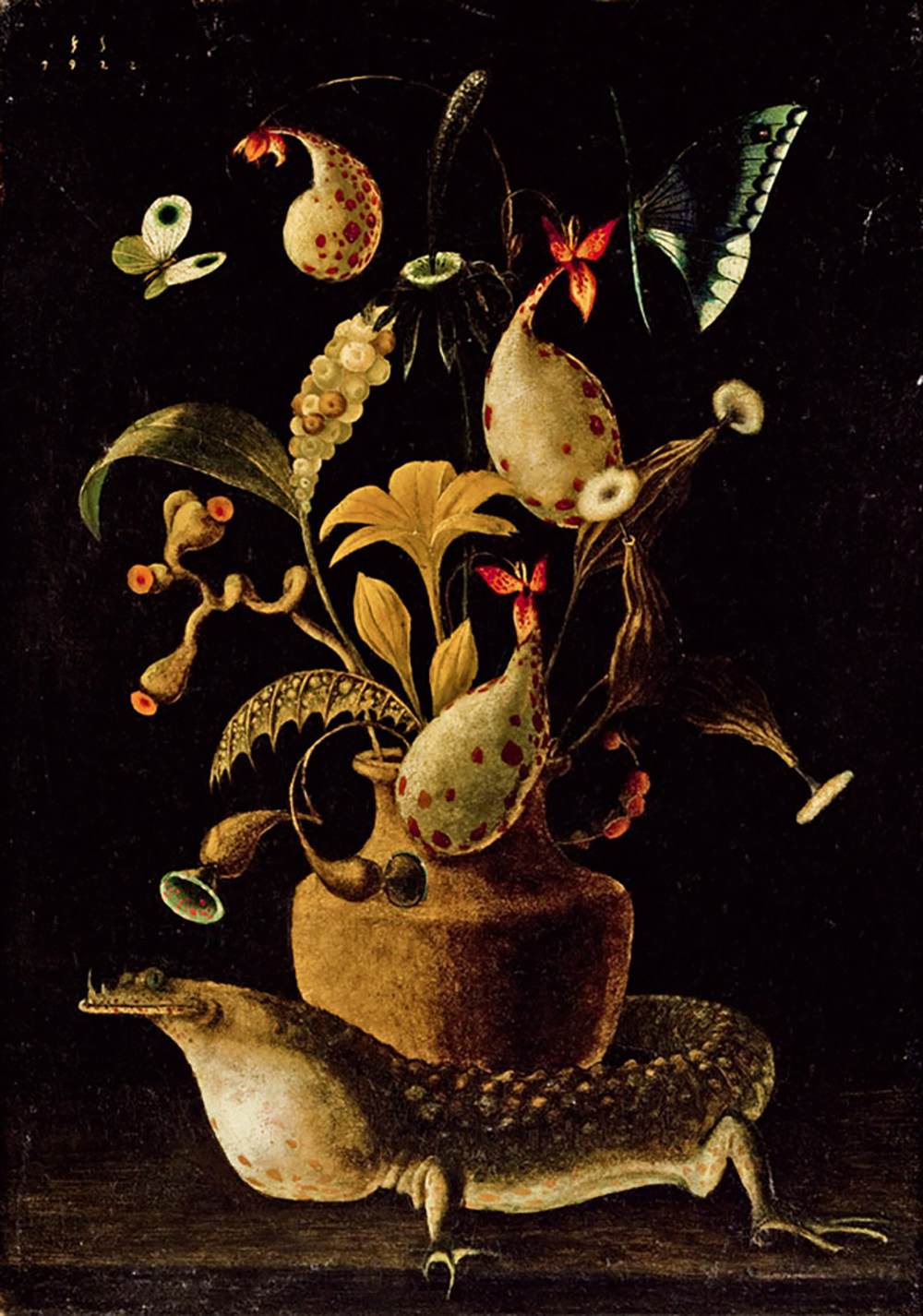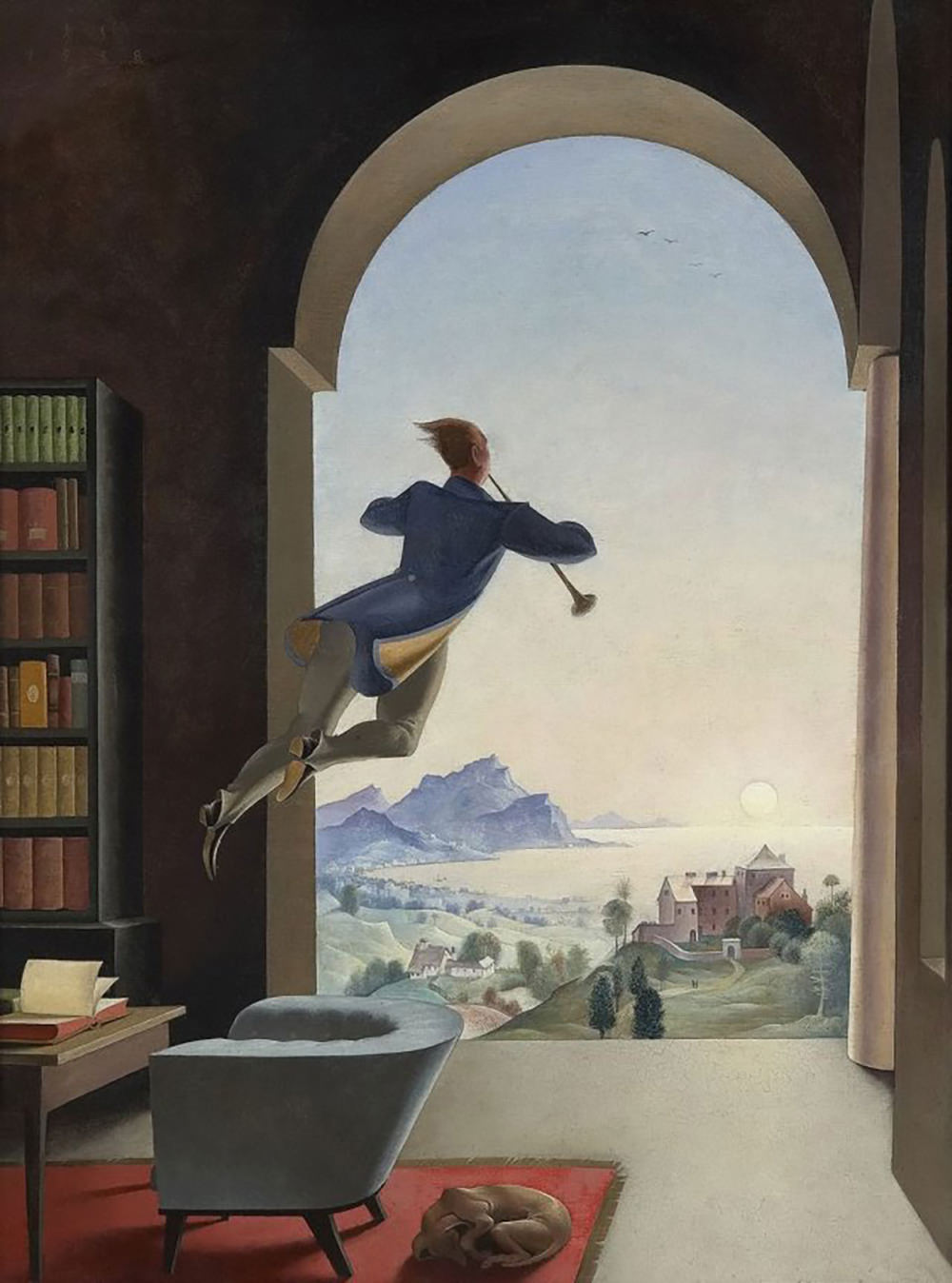Franz Sedlacek, an Austrian artist, didn’t just paint pictures; he painted nightmares. His canvases were windows into a world where the line between reality and fantasy blurred, where everyday life was invaded by the grotesque and the sinister. Hooded figures, like ghastly vultures, perched on bare branches against gloomy skies. Hideous creatures lurked in the shadows of homes and streets, their presence a constant threat.
He painted fleeing figures, alone and desperate against the darkness of a looming forest or a silent cityscape. Their terror was palpable, their escape uncertain. Sedlacek’s art captured the anxiety and fear that gnawed at the human soul, the ever-present knowledge that something wicked might be lurking just around the corner. Yet, amidst the horror, there was a dark humor, a touch of wit that made his work even more unsettling.
He was an educated man, a veteran of World War I who had witnessed the horrors of trench warfare firsthand. And yet, despite having seen the darkest side of humanity, he joined the Nazi party in the 1930s, becoming part of a regime responsible for unimaginable evil.
Sedlacek’s involvement with the Nazis remains a troubling aspect of his legacy. Was he a true believer in the twisted ideology of the Third Reich, or was he simply swept up in the tide of nationalism that engulfed Germany and Austria at the time? The answer remains elusive.
In 1939, he was drafted into the Wehrmacht, the German army, and rose through the ranks, eventually becoming a captain. He fought on multiple fronts, from the brutal Eastern Front in Stalingrad to the frozen landscapes of Norway and the battlefields of Poland. It was in Poland, during the battle of Torun Fortress, that Sedlacek vanished.
The circumstances of his disappearance remain a mystery. Was he killed in action? Did he desert? Or did he somehow manage to escape and disappear into a new life? Despite years of uncertainty, Sedlacek was officially declared dead in 1972, leaving behind a legacy of haunting artwork and unanswered questions.



















